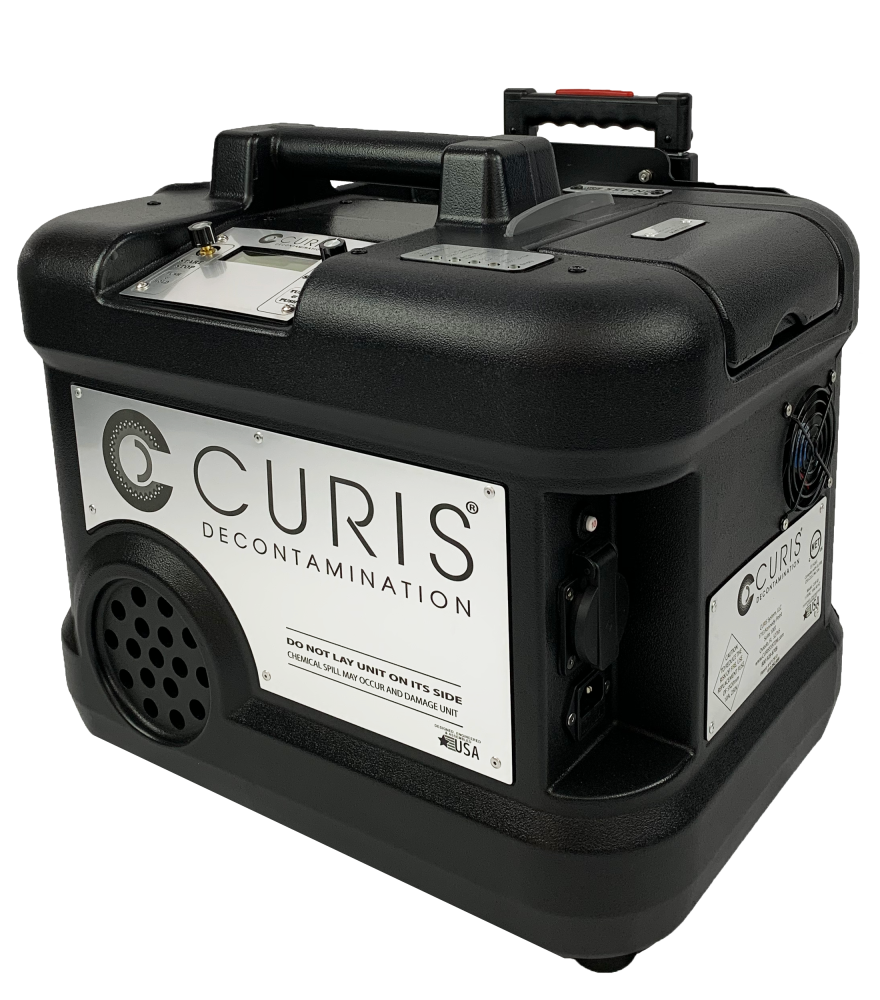Tridemic: Rising Cases of RSV, Influenza, and COVID-19
This year’s winter season is shaping up to become a Tridemic
Cases of RSV, influenza, and COVID-19 are rising. Many hospitals are rapidly filling with patients infected with these respiratory pathogens and are quickly becoming overwhelmed. To address these concerns and to keep cross contamination at a minimum, whole space disinfection should be implemented.
Respiratory Syncytial Virus (RSV) Rates are Skyrocketing
RSV, or Respiratory Syncytial Virus, is a common pathogen that mainly affects young children, infants, and the elderly. It produces respiratory illness symptoms like coughing, sneezing, and stuffy nose but it can easily turn into severe inflammation in the airways (Bronchiolitis) that can impair breathing and require oxygen therapy or mechanical ventilation. In less than a month, cases jumped from 1,245 to 7,993 between September and October and have continued to grow. RSV cases are up 5 times since the 2019-2020 season. This virus is known for being spread through the air, but more importantly, through contaminated surfaces where it can survive for several hours—long enough for others to touch and quickly spread. Addressing high touch point areas in the hospital is crucial to ensuring cross contamination between patients does not occur.
Influenza Rates May Be the Worst Since 2010
The influenza virus, commonly known as the flu, is another respiratory virus that peaks during the fall and winter months. According to the CDC, 4.4 million infections, 38,000 hospitalizations, and 2,100 deaths have been attributed to the flu since the start of this year’s flu season. In week 45 alone, there have been more hospitalizations than any other flu season since the 2010-2011 season. The flu can turn dangerous with the development of pneumonia and other secondary manifestations. Much like RSV, the flu can be spread through either droplets or contaminated surfaces.
Why is this Season’s RSV and Influenza Worse than Normal?
Scientists believe that growing cases of both RSV and influenza can be attributed to the COVID-19 pandemic. Many children have not been exposed to these viruses over the past few years and therefore have not acquired any immunity to them, making them more susceptible to becoming sicker if they are infected this season.
COVID is Also on the Rise
COVID-19 cases have also begun to slowly rise again. In the Americas, cases have risen 17% this week compared to the previous week. COVID-19 mainly spreads through airborne routes or close contact with an infected individual. Preventing the spread in the hospital environment is important in controlling cases.
Choosing the Best Disinfection System for RSV, Influenza, and COVID
Since these dangerous pathogens can exist on surfaces for extended periods of time, preventing cross contamination through proper disinfection is crucial. CURIS System Hybrid Hydrogen Peroxide™ (HHP™) technology allows for hands-free high-level disinfection that helps protect healthcare systems and hospitals. These devices can be run remotely from a tablet outside of the contaminated room, keeping operators safe from unnecessary exposure to potential viruses in the affected room. CURIS System devices inject hydrogen peroxide into the space and reach every surface air touches for whole space disinfection and 6-log (99.9999%) efficacy.* This includes high-touchpoint areas that are known to harbor pathogens like bed rails, call bells, TV remotes, and bedside tables.  Targeting the whole space also helps prevent cross contamination from an infected patient to an uninfected patient entering the room. Learn more about using CURIS in a critical care setting in our webinar: 'Seeing Through the Fog: Hybrid Hydrogen Peroxide Environmental Disinfection.' Recognized by the EPA as effective against emerging viral pathogens, such as SARS-CoV-2 (COVID-19), Monkeypox, and Ebola, hydrogen peroxide fogging using CURIS System may be an effective weapon in the battle against this tridemic, as well as higher level MDROs like C. diff in a tri-part soil load.
Targeting the whole space also helps prevent cross contamination from an infected patient to an uninfected patient entering the room. Learn more about using CURIS in a critical care setting in our webinar: 'Seeing Through the Fog: Hybrid Hydrogen Peroxide Environmental Disinfection.' Recognized by the EPA as effective against emerging viral pathogens, such as SARS-CoV-2 (COVID-19), Monkeypox, and Ebola, hydrogen peroxide fogging using CURIS System may be an effective weapon in the battle against this tridemic, as well as higher level MDROs like C. diff in a tri-part soil load.
*C. diff in a tri-part soil load.
Sources:
https://time.com/6226678/rsv-virus-kids-babies-symptoms/
https://www.cdc.gov/rsv/about/transmission.html
https://www.cdc.gov/flu/weekly/fluactivitysurv.htm
https://www.epa.gov/pesticide-registration/disinfectants-emerging-viral-pathogens-evps-list-q